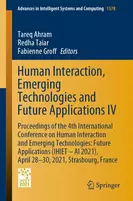|
Jinpitcha Mamom, Bunyong Rungroungdouyboon, Phadungsak Ratanadecho, Chatchai Mingmalairak, "Humidity-Sensing Mattress for Long-Term Bedridden Patients with Incontinence-Associated Dermatitis", Micromachines, Vol. 14(6)., May, 2023 Abstract
Designing new medical devices with advanced humidity sensors is of great significance for patients with incontinence-associated dermatitis (IAD). The primary goal of this study is to test the humidity-sensing mattress system for patients with IAD in clinical settings. The design of the mattress is set at 203 cm, with 10 × 3 sensors, dimensions of 19 × 32 cm, and a weighted bearing of 200 kg. The main sensors consist of a humidity-sensing film, a thin-film electrode (6 × 0.1 mm), and a glass substrate (500 nm). The sensitivity of the test mattress system showed that the resistance humidity sensor was at a temperature of 35 ◦C (V0 = 30 V, V0 = 350 mV), with slope at 1.13 V/fF, f = 1 MHz, 20–90% RH, and a response time of 20 s at 2 µm. In addition, the humidity sensor reached 90% RH, with a response time of less than 10 s, a magnitude of 107–104 Ω, 1 mol%, CrO1.5, and FO1.5, respectively. This design is not only a simple, low-cost medical sensing device, but also opens a new pathway for developing humidity-sensing mattresses in the field of flexible sensors, wearable medical diagnostic devices, and health detection.
0 Comments
Mamom, J., Daovisan, H., Winaiprasert, P., & Yolpant, W., "The “Silent Assassin” in Your Job? Occupational Stress on Female Casual Workers with Mental Illness: A Sequential Mixed-Method Study.", International Journal of Mental Health and Addiction, Apr 2023 Abstract
Mental illness is a widespread psychiatric disorder, but few studies have explored how it manifests in occupational stress. This study aims to examine the occupational stress on female casual workers with mental illness in the informal economy of Lao PDR. We utilised a mixed-method study with a sequential exploratory design (quantitative and qualitative data). Our study drew on a sample of 1037 structured interviews and purposive sampling of 15 in-depth interviews from October 2018 to March 2020. The three-level effect model showed a positive effect (χ21χ12 = 11.57, p < 0.01; χ21χ12 = 15.50, p < 0.01; χ22χ22 = 20.02, p < 0.01), thus supporting all relevant hypotheses. The quantitative findings are consistent with the qualitative results, revealing that occupational stress may result in mental illness. The implications of these findings for practice are discussed. Sairag Saadprai., Bunyong Rungroungdouyboon, Supachai Vorapojpisut, Supattra Silapabanleng, Poonyanat Nualon, "Validity and Reliability of Kinetic Step Box on Vertical Ground Reaction Forces Measurement", Journal of Exercise Physiology Online, Vol. 26(2)., Apr, 2023. Abstract
The Kinetic Step Box (KSB) was developed with the purpose for analyzing body movements by detecting vertical Ground Reaction Forces. The purpose of this study was to test the validity and reliability of the vertical Ground Reaction Forces measurement from the KSB compared with the Standard Force Plate (SFP). Thirteen females and seven males performed sitting to standing posture on the KSB and the SFP for 3 sets of 5 times (each set was measured by each rater). All the data were collected on the frequency at 100 Hz/ sec for 2 seconds. The validity of mean vertical Ground Reaction Forces between the SFP and KSB was tested by Pearson’ s Correlation Coefficient. Intra- rater reliability of the SFP and the KSB were calculated by using intraclass correlation coefficient (3,1) and for inter-rater reliability using intraclass correlation coefficient (3,3). The SFP and the KSB had the validity of mean vertical Ground Reaction Forces at the very high level with r at 0. 996. The intra- rater reliability of the SFP and the KSB were at the very high level with r at 1.000 and 1.000. The inter-rater reliability of the SFP and the KSB were at the very high level with r at 1. 000 and 1. 000. The KSB has vertical Ground Reaction Forces measuring capacity like the SFP. The KSB can be used an alternative of the SFP for simple motion measurement. The KSB is low cost, real-time display, and portable. Jinpitcha Mamom, Bunyong Rungroungdouyboon, Hanvedes Daovisan, Chawakorn Sri-Ngernyuang, "Electronic Alert Signal for Early Detection of Tissue Injuries in Patients: An Innovative Pressure Sensor Mattress", Diagnostics, Vol. 13(1)., Jan, 2023. Abstract
Monitoring the early stage of developing tissue injuries requires intact skin for surface detection of cell damage. However, electronic alert signal for early detection is limited due to the lack of accurate pressure sensors for lightly pigmented skin injuries in patients. We developed an innovative pressure sensor mattress that produces an electronic alert signal for the early detection of tissue injuries. The electronic alert signal is developed using a web and mobile application for pressure sensor mattress reporting. The mattress is based on body distributions with reference points, temperature, and a humidity sensor to detect lightly pigmented skin injuries. Early detection of the pressure sensor is linked to an electronic alert signal at 32 mm Hg, a temperature of 37 ◦C, a relative humidity of 33.5%, a response time of 10 s, a loading time of 30 g, a density area of 1 mA, and a resistance of 7.05 MPa (54 N) at 0.87 m3/min. The development of the innovative pressure sensor mattress using an electronic alert signal is in line with its enhanced pressure detection, temperature, and humidity sensors. Jinpitcha Mamom, Hanvedes Daovisan, "How Buddhist Religious Care Is Incorporated for End-of-Life Stroke Patients Receiving Palliative Care at Home during the COVID-19 Pandemic: Revisiting Constructivist Grounded Theory", religions, Vol. 13(10), Oct 2022 Abstract
Coping with the COVID-19 pandemic has involved unprecedented health challenges, impacting not only the receipt of palliative care, but also that of religious care. The present article aimed to explore how Buddhist religious care is incorporated for end-of-life stroke patients receiving palliative care at home during the COVID-19 pandemic in Thailand. A constructivist grounded theory (CGT) was utilised with theoretical sampling of 30 respondents in the Angthong, Ayutthaya, and Pratumthani provinces, central Thailand, from June 2020 to March 2022. Online in-depth interviews were video-recorded and transcribed, using written memos and constant comparative methods. Data transcripts were analysed using open, axial, selective coding, categorising, and themes. Our CGT study identified five themes of Buddhist religious care incorporated for end-of-life stroke patients receiving palliative care at home, namely Buddhist therapies, religious beliefs, religious life satisfaction, religious mental care, and religious needs. The implications of Buddhist religious care being incorporated for end-of-life stroke patients receiving home palliative care during the COVID-19 pandemic are discussed. Sairag Saadprai, Sudarat Apibantaveesakul, Plaiwan Suttanon, Bunyong Rungroungdouyboon, "Design Development and Testing of Chair Accessory for Lower Limb Exercising for the Elderly.", August 2021, Volume 24 Number 4, p.82-95. Abstract
The elderly adults seldom engage in physical activities, especially in the COVID-19 situation because they cannot go outside for outdoor activities or participate in group exercises. This is a problem because increasing physical activities is very essential. Another problem is the fact that exercise equipment that can be used at home is limited. Most equipment is large, imported costly, and difficult to use without a caregiver. Hence, the purpose of this study was to report on the design and development of an accessory to be installed with a chair for lower limb exercise for the elderly. It works as a leg press exercise machine. It can be used with any type of chair, including wheelchairs. Resistance and leg degree can be adjusted while exercising to best suit each user. This study also tested its functions. First, the testing revealed that the design of chair accessory has a factor of safety at 2.8 that is adequate with repetitive usage with no damage to the user. Second, the stretch distance is from 0 to 10 cm. Third, the chair accessory “degree of movement” is from 90º to 180º. Also, as to the validity testing of resistance of the chair accessory, the researchers analyzed in each resistance level compared with the standard level using One Sample Test (significance at the P<0.05 level), and it does not show the significant differences from the standard level; at the 2 kg level (left side; P = 0.869, and right side; P= 0.738), at the 4 kg level (left side; P = 0.856, and right side; P = 0.763), and at the 6 kg level (left side; P = 0.059, and right side; P = 0.059). The testing shows that it can be used safely with elderly adults, thus enabling them to have better health and quality of life. Laliphat Manamanchaiyaporn , Xiuzhen Tang, Yuanyi Zheng, and Xiaohui Yan, "Molecular Transport of A Magnetic Nanoparticle Swarm towards Thrombolytic Therapy", VOL. 6, NO. 3, JULY 2021, p.5605-5612. Abstract
Due to miniature size, controllability, navigation and versatile capability, micro/ nanorobots is appealing for minimally invasive procedures. In particular, blood clot as an unwanted biological object in vessel leads to severe diseases. Herein, we report a magnetite nanoparticle swarm (Fe3O4) that is capable of inducing hydrodynamic effect to capture tissue plasminogen activator (t-PA) in emergent vortices under the dynamic magnetic field. Once the swarm move to approach a site of a blood clot, the caged t-PA molecules are transported together with it across the interface for thrombolysis. In addition, the dynamic motion of each individual spinning nanorobot can assist the clot removal by exerting mechanical force to rub against the softened clot with loose fibrin fibers that is incompletely dissolved by chemical lysis of t-PA. Feasibility and performance of the swarm towards thrombolytic therapy are approved by in vitro experiments. The result reports that blood clot with 3-mm-diameter and 9-mm-length is completely removed in two hours, faster than the clinical procedure applying t-PAalone about 3 times. The contribution is extensible to apply for medical treatments ranged from simple tasks (e.g. detoxification) to complex tasks (e.g. tumor destroy). K. Ngamdencharoensri, P. Kooncumchoo, B. Rungroungdouyboon, "The design of functional mechanical hand device for spasticity hand functions", Vol.9 No.1, p. 1-10 Abstract
Stroke patients usually have disability on body opposite to damaged brain side. Recovery of upper limb is more difficult than lower limb. In addition, the distal parts of limbs are less recoverable and slower than the proximal parts. Moreover, in some cases, no longer recover any hand functions. They are not weakness only, but there are also spasticity that limit hand functions training after stroke. In moderate to severe spasticity, patients cannot open hand by self. So, the functional mechanical hand device is invented for assisting open spasticity hand, allowing patients to practice their hands by themselves every day. The main components of this prototype are springs separating of individual finger. The spring force acts finger extension. Individual finger spring has a unique force like the natural force proportion of any finger. That reason for each finger moves close to the natural fine movement independently while using the device. Also, the wrist of device is in suitable position for using hand. The simulation results of this prototype show that there is strength and safety in use. Especially, it is suitable for this patient type. The biomechanical test results in the healthy subject show that range of motion (ROM) of fingers are in the desired motion range. It is suitable to each task gestures of the finger. Puagprakong P., Earde P., Kooncumchoo P.,"Lumbo-Pelvic-Hip Angle Changes During Upright and Free Style Sitting in Office Workers with Lower Crossed Syndrome.", Apr. 2021, p. 532-538. Abstract
Lower crossed syndrome (LCS) is an imbalance of muscles in the lower body segment. Muscle imbalance with prolonged sitting may increase the risk of low back pain. The objective of this study was to study the lumbo-pelvic-hip angle in upright and freestyle sitting in healthy and LCS individuals. Thirty office workers (normal = 10, LCS type A = 10, and LCS type B = 10) who worked 6–8 h./d in a sitting posture were recruited. Lumbo-pelvic-hip angle was recorded while participants typed a text for 30 min in upright and freestyle sitting. Two-ways mixed model ANOVA and post-hoc Turkey test were used to analyze data. Decreased lumbar lordosis was found among the three groups. However the LCS type A group maintained their lumbar lordosis and anterior pelvic tilt, while lumbar kyphosis and posterior pelvic tilt were found in LCS type B in both sittings. Mamom, J., Rungreungduayboon,B, "A Multidisciplinary Integrative Innovative Mattress Design to Prevent Pressure Injury for Palliative Care in the Community in Thailand", Vol. 48(4), Apr 2021, P 76-81. Abstract
A pressure injury is a severe complication that causes excessive interface pressure on a bony prominence and usually occurs in palliative patients in the community. The article describes a new healthcare innovation, A lateral tilting mattress (LTM), based on the pressure injury pathophysiology principle. This modern nursing innovation, created by a multidisciplinary team that could adjust a patient's head and knee and rotate to the left and right, may decrease interface pressure over bony prominences in palliative patients. This experimental research design of 70 palliative home-based patients examined the effectiveness of LTM on pressure injury healing scores and family caregiver's quality of life levels over time from September 2019 to May 2020. We examined differences in patients' pressure injury healing scores and family caregivers' quality of life levels between the different groups: LTM versus no-LTM. Significant time by group interactions was found on patients' pressure injury healing (F = 235.123, p <.01) and family caregivers' quality of life (p <.05) in the LTM versus no LTM group. The results provide evidence for the effectiveness of LTM in improving pressure injury healing scores that may decrease interface pressure over bony prominences in palliative patients and the overall quality of life levels in family caregivers. The findings also suggest the need for further healthcare innovation to improve the quality of care for palliative patients, increase the quality of life (or decrease stress level) among family caregivers, and reduce workloads and danger for caregivers. |
Archives
May 2023
Categories |























 RSS Feed
RSS Feed